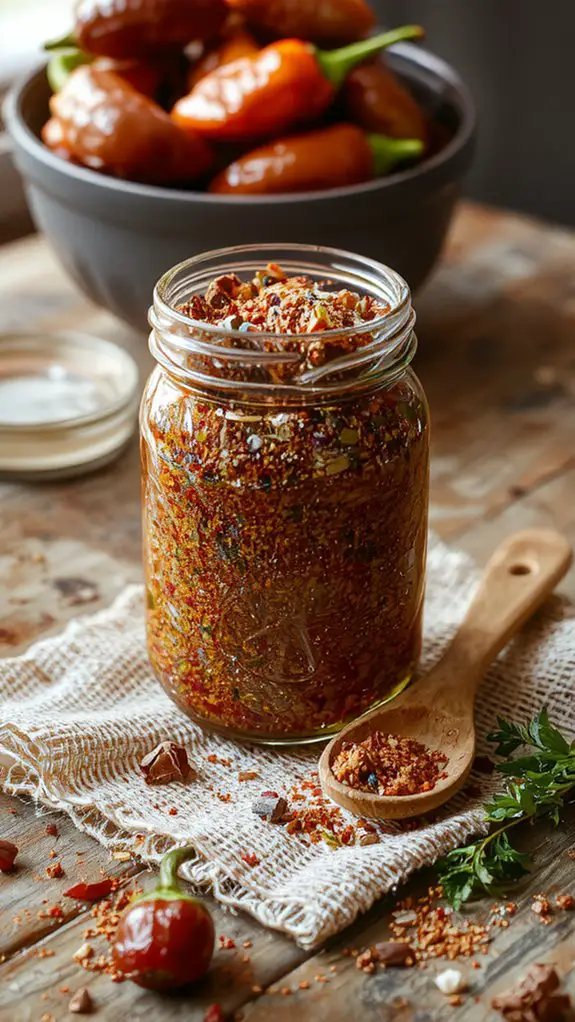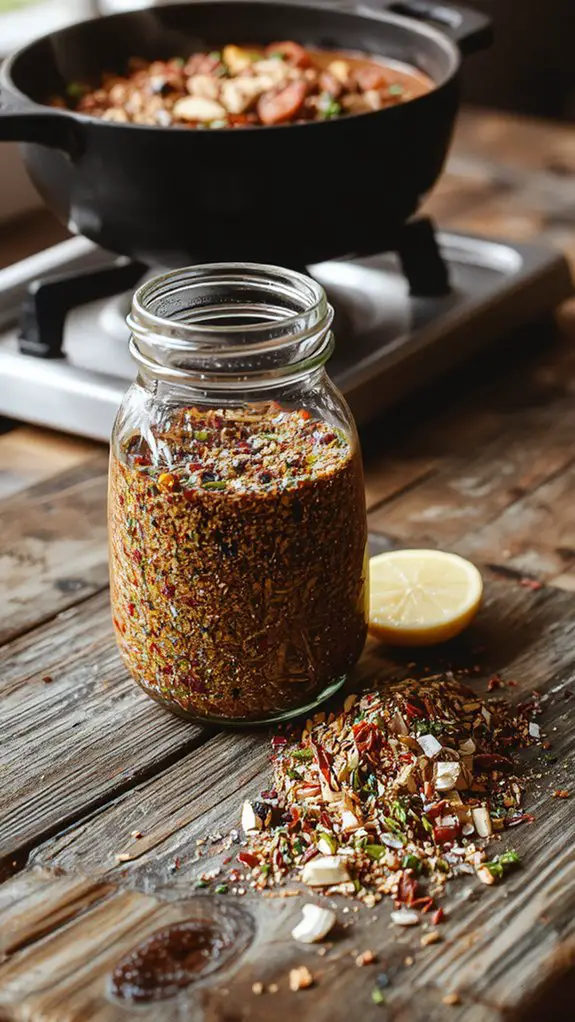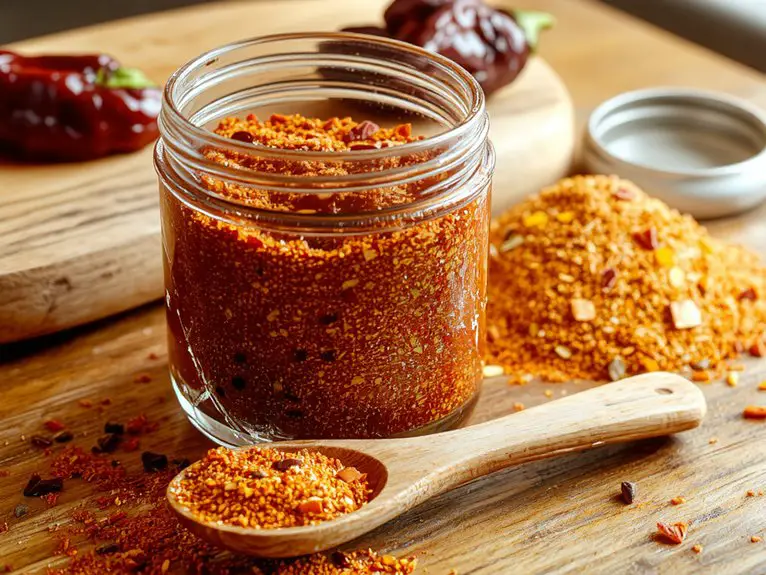Making chili seasoning at home feels like accessing a secret flavor vault. I’ve found that blending the right spices—chili powder, cumin, paprika, and a touch of cayenne—creates a depth store-bought mixes just can’t match. But there’s a trick to amplifying those flavors even further, and it’s simpler than you might think. Let me show you how to craft a seasoning blend that will transform your chili into something unforgettable.
Recipe
Skip the store-bought packets—once you taste chili made with this homemade seasoning blend, you’ll never go back. The secret? A perfectly balanced mix of smoky paprika, earthy cumin, and just the right kick of cayenne that transforms ground beef, beans, or even veggie chili into something unforgettable.
I’ve tweaked this recipe for years, and it’s the one I always reach for when I want deep, layered flavor without the weird additives. Imagine rich, aromatic spices blooming in your pot, filling your kitchen with warmth, and giving every bite that slow-cooked taste—even on a busy weeknight.
Trust me, your chili game is about to level up.
Ingredients
Homemade chili seasoning is all about layering flavors to create a rich, aromatic blend that will elevate any chili recipe. The key is using high-quality spices and adjusting ratios to suit your taste. Here’s what you’ll need to make a batch that’s smoky, savory, and just the right amount of heat.
- Chili powder – The backbone of the blend, providing depth and smokiness. Opt for a high-quality chili powder for the best flavor.
- Cumin – Adds earthy warmth. Don’t skip this—it’s essential for authentic chili flavor.
- Paprika – For a subtle sweetness and vibrant color. Smoked paprika is a game-changer if you want extra depth.
- Garlic powder – Brings savory umami. Fresh garlic works too, but the powder guarantees even distribution.
- Onion powder – Adds a touch of sweetness and complexity.
- Cayenne pepper – For heat. Adjust to your spice tolerance—start small and add more if needed.
- Oregano – Herbaceous notes that balance the spices. Mexican oregano is ideal, but regular oregano works in a pinch.
- Salt – Enhances all the flavors. Use kosher or sea salt for the best results.
- Black pepper – Adds a hint of sharpness and warmth. Freshly ground is best.
*Pro Tip*: Store your seasoning mix in an airtight container to keep it fresh. Double or triple the batch for future use—it’s a time-saver!
If you’re out of an ingredient, smoked paprika can stand in for both chili powder and paprika, while a pinch of red pepper flakes can replace cayenne. Fresh garlic and onion can substitute their powdered versions, but be mindful of the texture.
This blend is flexible, so feel free to tweak it to your liking!
How to Make the Best Flavor-packed Chili Seasoning Recipe

Label and date the container. Write the contents and date on the container to keep track of freshness. Homemade chili seasoning typically stays flavorful for up to 6 months when stored properly.
Use as needed for your favorite chili recipes. Shake the container before each use to redistribute the spices. This step guarantees you get a consistent flavor in every batch of chili you make.
Pro Tip: Double the recipe if you make chili often. Having extra on hand saves time and effort for future cooking sessions.
Watch-Out Warning: Avoid using damp spoons or containers when measuring or storing the seasoning. Moisture can cause clumping and reduce the shelf life of your spice blend.
Nutrition
This homemade chili seasoning recipe is not only easy to make but also a healthier alternative to store-bought mixes. Below is the nutritional breakdown per serving.
| Nutrient | Amount |
|---|---|
| Calories | 10 |
| Total Fat | 0.2g |
| Sodium | 390mg |
| Carbohydrates | 2.3g |
| Protein | 0.4g |
Chef Tips
If you’re looking to elevate your chili, I recommend toasting the spices before mixing them—it deepens their flavors. Always bloom them in oil first to release their full aroma.
Taste as you go and adjust seasoning—chili’s flavor evolves as it cooks. Don’t rush the simmer; let it develop complexity.
Finally, add acidity—like lime—to brighten the dish. These small steps make a big difference.






